14
Dec / 11
Olympic Style Lifting w/ Dumbbells: DB Clean
posted by: Sean
Many of us are planning on travelling this holiday season and working out can oftentimes take a back seat. Using myself as an example I use every excuse in the book while I’m on the road: “I didn’t sleep well”, “I slept on my back weird”, “I think I’m coming down with something”, but mostly “I don’t think the gym has the equipment I’ll need” or “They might not take kindly to the sight of weights being jumped around or the sound of plates clanging as they’re lowered”. Whatever the excuse more often than not I’ll talk myself out of getting a workout in, even if I’m not feeling 100%. You’ve likely read about our previous travels over the holidays to “Globo” gyms here and here, but this year I encourage all of you to see your travel as an opportunity to mix up your training a bit, especially if you’re limited on equipment. Every great athlete appreciates a change of pace or the opportunity to work some new movements/modalities into their training to keep things fresh among many other reasons. While on the road this year, or even while Intrepid is closed, use it as an opportunity to try something different in your workouts, but just make sure to get off your butt and do something active if you can’t make it to a gym.
One way that I’ve found works well for me while I’m on the road is Olympic Style Lifting with Dumbbells, introduced to me by my college Strength and Conditioning Coach Allen Hedrick. During college all the athletes thought he was coming from left field with many of our workouts, but as I’ve learned and tried more both as an athlete and coach, I’ve come to appreciate not only the value of Olympic lifting but also the benefits of using “odd objects” such as dumbbells in a strength and conditioning program. Here’s Coach Hedrick’s take on the advantages of dumbbell training:
- Dumbbells require more balance than training with barbells or machines. This increased balance requirement is of value in terms of enhancing athletic performance, a significant consideration in fitness programs, and can lead to greater muscle fiber recruitment.
- Dumbbells require more muscular control than barbells, enhancing kinesthetic awareness.
- Dumbbells allow unilateral training (training one limb at a time), which can provide the opportunity for emphasizing greater movement specificity in the training programs of athletes and greater program variety for bodybuilders and those training for fitness.
- Dumbbells promote greater recruitment of the stabilizing muscles, enhancing joint stability and hypertrophy.
- Some exercises can be performed with a higher degree of safety with dumbbells than barbells. For example, when performing step-ups.
- Finally, dumbbells provide greater variety in the training program. Greater variety leads to less opportunity for physiological and psychological staleness in the training program, enhancing the opportunity for continued growth.
Dumbbells challenge one’s midline stability in ways much differently than a barbell and I think the case can be made that they’re almost equally important for this very reason. And for this reason the amount of weight used will be much less than what would be used with a barbell and dumbbells should definitely not completely take the place of barbell lifts, simply supplement them. Very seldom outside of the gym will one ever be lucky enough to lift something as balanced as the barbell so it pays to be able to support, move, and catch loads efficiently and in positions that aren’t balanced from one side of the body to the other. Since most gyms now-a-days have at least dumbbells available, I’ll introduce you to some new ways you can use dumbbells to not only to improve your explosivity and mid-line stability, but also help keep things fresh in your training. And don’t worry if the dumbbells don’t progress very high in weight where ever you might end up for a workout, as you’ll see it doesn’t take much to really challenge yourself.
In his T-Nation articles Olympic Lifts and Dumbbells: A Winning Combination and Advanced Dumbbell Training, and also in this NSCA Journal article entitled Power Training with Dumbbells written by one of his former assistant coaches, Coach Hedrick breaks down a variety of dumbbell movements. I’ll only touch on the clean here in this post and try to cover the snatch and jerk in a future post if there’s interest, but please check out his T-Nation articles or other NSCA articles if you’d like to read more about the topic or others he’s written on.
DB Clean
This movement can be performed from the hang position or the mid-shin position if one wishes to simulate the height of the bar when performing Olympic lifts with a barbell. Your feet should be more or less under your hips in a comfortable jumping stance. Start tall with a dumbbell in either hand by your sides. Dip to initiate the jumping action by pushing your butt back and flexing your hips. Don’t lock your knees straight but make an effort not to bend the knees much. Keep your chest up and keep the dumbbells along the sides of your legs ensuring your shoulders stay ahead of the dumbbells and the dumbbells don’t drift forward as you dip. Once the dumbbells reach about knee height or slightly higher, explode upwards like you’re jumping making an effort not to pause at this bottom position.
Once you reach triple extension (full extension of the hips, knees, and ankles) forcefully drive your elbows up to the ceiling keeping the dumbbells close to the side of your body. The elbows should be kept high above the wrists as you pull the dumbbells upward alongside your ribcage with the idea of pulling them to your armpits. As you pull keep the dumbbell oriented in the same position as it was in the start with your palms facing your sides. As you reach the peak of your pull, and as you fatigue and/or increase in weight, the upward pull with your arms not only generates more height in your pull but should also pull you down to meet the dumbbells at the height your were able to “jump” them.
In my experience, the catch is the trickiest part of the DB Clean and can make or break the attempt. Our catch position is very similar to that of its barbell counterpart, however the ease of the transition is much different using dumbbells. The main reason is that when using a bar the spin of the bar and the ability to momentarily loosen one’s grip facilitates the transition to the rack position. However, we do not have the same luxury when using dumbbells. You have to maintain a firm grip on the dumbbell and rotate it as one unit with the arm as you rotate your elbows from the high and outside position of the pull, under the dumbbell, and finally in front of your body so that the tips of your elbows are pointing at the horizon and the dumbbells have settled on the meaty portion of your shoulders or your deltoids. When its all said and done the dumbbell has rotated roughly 270 degrees, and it’s this rotation that makes the DB clean more challenging especially if the dumbbells are large and bulky. However, if you master the transition with dumbbells you will probably never have much on an issue whipping your elbows around on a barbell clean. You might find it more comfortable to allow the plate of the dumbbells to rest on your delts rather than holding the dumbbells like Michael in the picture at the top of the post (in his defense he was performing thrusters and that position was more ideal for that particular movement than the one I’m describing here). The clean can be caught in the power position or a partial front squat, or in a full depth front squat which typically allows heavier weights to be used.
The DB Clean can also be performed using one arm at a time to further challenge your midline stability. The difference being as you reach your triple extension and begin the high pull, only one arm will pull while the other keeps the dumbbell by your side (as pictured in the pull section above). The catch will resemble the photo below with one arm in the front squat rack position while the other dumbbell remains by your side.
I honestly wish I could find a video to show you how all the pieces mesh together but I couldn’t find one I felt was worthy of posting. In the T-Nation article they included a video that gives you the gist of the movement but please don’t mimic her movement as you see it. Stick to the points I laid out here, and sooner than later Intrepid will have dumbbells of its own and you’ll likely see more dumbbell movements like the clean in the future, so start practicing now.
WOD 12.14.11
Deadlift 1×5/Wendler
“DT”
5 Rounds
12 Deadlifts
9 Hang Power Cleans
6 Push Jerks


 310.465.6565 |
310.465.6565 |





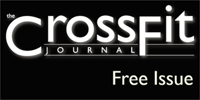



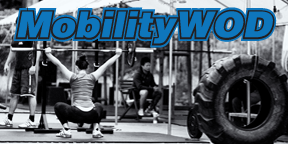






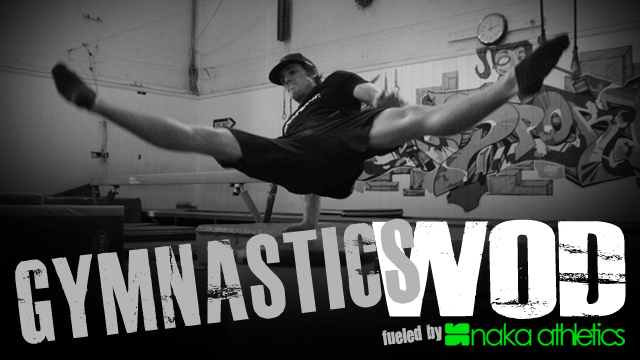




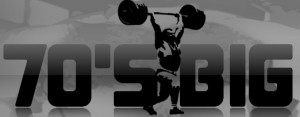
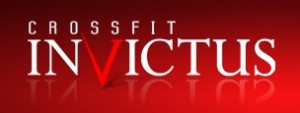

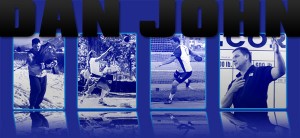
2 Responses to “Olympic Style Lifting w/ Dumbbells: DB Clean”
Jeff Stoehr
December 14, 2011 at 7:49 AM
I found that db core lifts were great confidence builders and helped build technique focus with my newbie HS lifters over the years…
Michael H
December 14, 2011 at 1:48 PM
Can we do these with kettle bells? Perhaps a little tutorial on skills day?